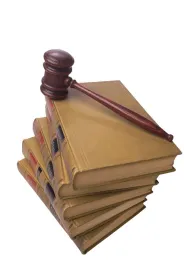On 22 November, Johan Ysewyn and Maria Jaspers (DG COMP) presented the highlights of recent EU cartel enforcement in their annual dual-presentation at the IBC Advanced Conference in Brussels. They covered their traditional three pillars of enforcement, policy and court review.
As to enforcement, the settlement procedure continues to be a successful tool for the Commission and investigations have certainly been moving more quickly. However, the Court’s attention to the presumption of innocence in its recent ICAP judgment may require the Commission to rethink its approach in staggered hybrid scenarios. If the Commission cannot determine the liability of the settling companies without also taking a view on the participation of the non-settling companies, it will need to take the necessary measures to safeguard the presumption of innocence of the non-settling companies. The Court explicitly suggested simultaneous adoption of the decisions relating to all companies participating in the cartel as a potential solution.
Last year, we saw a rare purchasing cartel enter the cartel charts with Car Battery Recycling. Four battery recycling companies colluded to reduce the purchase price for used car batteries, to the detriment of dealers. The Commission’s fining policy bases the fine on the turnover affected by the cartel, which in this case was the purchase value of the batteries. However, as the purchase value had presumably been lowered by the effects of the cartel, the Commission increased the purchase value by 10 percent for the purposes of the fine calculation to keep the fine level in check with the economic significance of the infringement.
On the policy side, the ECN+ initiative and the recently introduced anonymous whistleblower tool, which enables individuals to bring potential cartel issues anonymously to the Commission’s attention, drew a lot of interest.
The Court’s continued close scrutiny of Commission decisions is also interesting to note this year. In ICAP, the Court assessed the Commission’s evidence in extreme detail and found that the broker’s facilitating role in one of the agreements had not been sufficiently demonstrated. In ICAP and also in Printeos – two cases where the Commission had departed from the traditional fining methodology on the basis of paragraph 37 of the Fining Guidelines – the Court also confirmed its high requirements for properly motivated decisions, by finding that the Commission had failed to provide adequate reasoning in its alternative fine calculation.
One of the big questions of the past year is how the Commission will respond to the drying up of the immunity pipeline. For well over a decade, the overwhelming majority of the Commission’s decisional practice has been sparked by immunity applications, but according to GCR the number of EU leniency applications has declined by almost 50 percent between 2014 and 2016. The Commission faces a challenge to demonstrate the effectiveness of its other detection methods to compensate for this apparent reduction. These methods include the recently launched anonymous whistle-blower tool, which appears to gain quite some traction with more than 9,000 monthly online hits.






 />i
/>i

